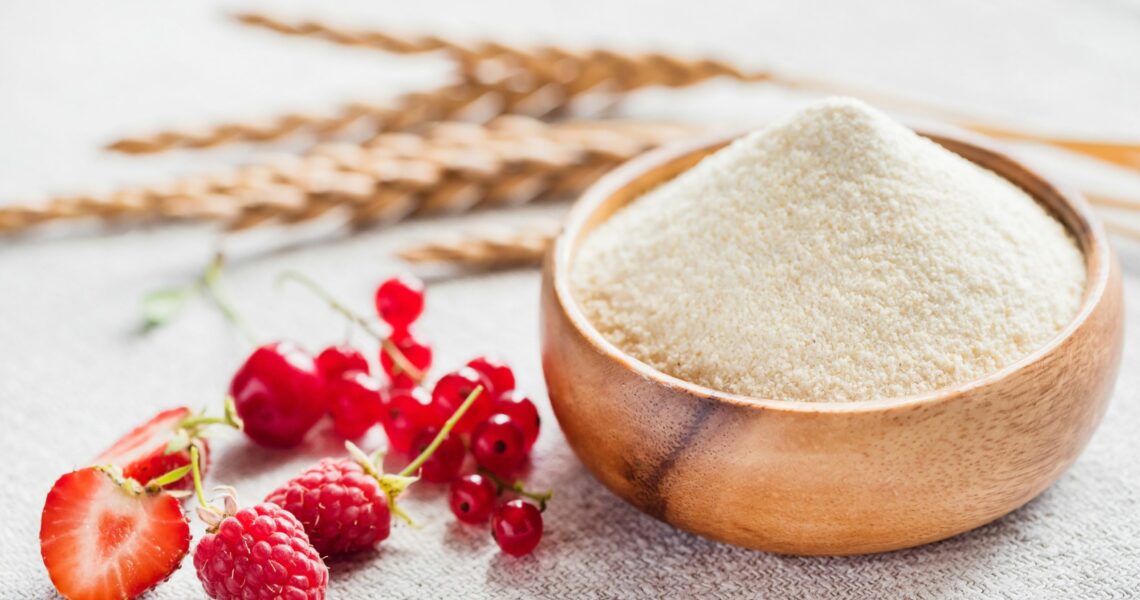Semolina is a type of wheat flour that is derived from durum wheat. It is commonly used in a variety of dishes, including pastas, bread, and desserts. In this comprehensive guide, we will explore the nutritional composition of semolina, its potential health benefits, various uses, and any downsides associated with its consumption.
Nutrition:
Semolina is a nutrient-dense food that provides several essential nutrients. A 1-cup (167g) serving of cooked semolina contains approximately:
- Calories: 601
- Carbohydrates: 122 grams
- Protein: 21 grams
- Fat: 1 gram
- Fiber: 8 grams
- Iron: 8% of the Daily Value (DV)
- Magnesium: 22% of the DV
- Phosphorus: 32% of the DV
- Selenium: 51% of the DV
- Thiamine: 34% of the DV
Semolina is a good source of complex carbohydrates, which are the primary source of energy for the body. It also contains a moderate amount of protein, making it a suitable option for individuals looking to increase their protein intake. Additionally, semolina provides various essential minerals, including iron, magnesium, phosphorus, and selenium, which play crucial roles in maintaining optimal health.
Benefits:
- Promotes heart health: Semolina is low in saturated fat and cholesterol, making it heart-friendly. It is also a good source of dietary fiber, which can help reduce cholesterol levels and lower the risk of cardiovascular diseases.
- Supports digestion: The high fiber content in semolina aids in digestion and helps prevent constipation. It adds bulk to the stool, facilitating regular bowel movements and maintaining a healthy digestive system.
- Provides energy: Semolina is rich in complex carbohydrates, which are slowly digested and provide sustained energy levels. Including semolina in your diet can help you feel fuller for longer periods and maintain stable blood sugar levels.
- Enhances bone health: Semolina contains essential minerals like phosphorus and magnesium, which are important for maintaining strong bones and teeth. These minerals play a vital role in bone formation and help prevent conditions like osteoporosis.
- Supports muscle growth and repair: Semolina is a good source of protein, which is crucial for muscle growth, repair, and maintenance. Including semolina in your diet can aid in post-workout recovery and support overall muscle health.
Uses:
- Pasta: Semolina is widely used in the preparation of pasta. Its coarse texture gives pasta dough a desirable elasticity and firmness, resulting in a delicious and satisfying meal.
- Porridge: Semolina can be cooked into a creamy porridge by boiling it with milk or water. This versatile dish can be flavored with various ingredients such as honey, fruits, nuts, or spices for a nutritious and filling breakfast or dessert.
- Baking: Semolina can be incorporated into bread, cakes, cookies, and other baked goods to add a unique texture and flavor. It provides a slightly crunchy and grainy consistency, enhancing the overall appeal of the baked products.
- Puddings: Semolina pudding is a popular dessert in many cultures. It can be prepared by simmering semolina with milk, sugar, and flavorings like vanilla or cardamom. The resulting creamy pudding can be served warm or chilled.
Downsides:
- Gluten content: Semolina is derived from wheat, which means it contains gluten. Individuals with gluten sensitivity or celiac disease should avoid consuming semolina or opt for gluten-free alternatives.
- Calorie-dense: Semolina is relatively high in calories compared to other grains. While it provides essential nutrients, it is important to consume it in moderation to maintain a balanced diet and prevent weight gain.
- Blood sugar impact: Although semolina is a complex carbohydrate, it can still raise blood sugar levels, especially in large quantities or when consumed without other fiber-rich foods. Individuals with diabetes or insulin resistance should monitor their portion sizes and pair semolina with fiber-rich ingredients.
- Processing: Commercially available semolina often undergoes processing, which may reduce some of its nutrient content. Opting for whole grain semolina or making it at home from scratch can help retain more nutrients.
- In conclusion, semolina is a versatile ingredient that offers several nutritional benefits. It is rich in complex carbohydrates, protein, fiber, and essential minerals. Incorporating semolina into your diet through pasta, porridge, baking, or puddings can provide sustained energy, support digestion, promote heart health, and aid in muscle growth. However, individuals with gluten sensitivity, those watching their calorie intake, or managing blood sugar levels should be mindful of their consumption.
- Liquid Gold Delights: My Journey with Just Kratom’s Kratom Gold Shots - March 30, 2024
- Semolina: Nutrition, Benefits, Uses, and Downsides - July 18, 2023

